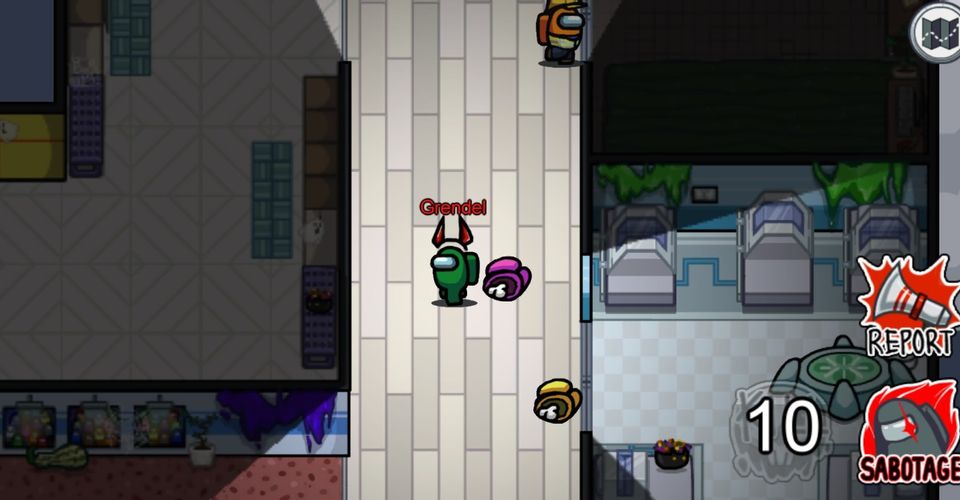Among Us: Should You Self-Report as The Impostor

In Among Us, the impostors will do everything they can to kill off the crewmates before they can finish their tasks. Whether it be causing blackouts to limit sight range, sneakily warping around the map in vents, or shutting doors to limit movement, they have many tricks up their sleeves. Of course, as this game is won through deceit and manipulation, lying is an integral part of the traitor’s tool kit. One such means to do so is through self-reports.
Self-Reporting, sometimes abbreviated to ‘self’, is a tactic that killers sometimes use to draw suspicion away from themselves. Rather than leave their crime scene, they’re the ones to report the body to the others. While this can be a great strategy to help them look innocent, it can also have the unintended effect of making them look sus. There are times when a self-report can be detrimental and times when it can be useful; this guide will help players understand when those best and worst times are.
The Dos and Don’ts of Among Us Self-Reports

At the start of each round, it’s more likely that self-reports will be successful. Players have yet to form trust with others and are less likely to suspect them, so accusations may not be as likely. Further, with less evidence to work with, crewmates will be more inclined to skip the voting rather than risk losing one of their allies. This of course, only works if there’s no evidence. Anyone who witnesses the self reporter and victim enter the same room together will have strong reason to believe they’re responsible. To self-report safely, keep track of everyone seen so that people have less information to work off of.
One strategy that can make the body discovery more authentic is by creating witnesses. Not witnesses to the actual murder of course, but witnesses of the body discovery. Someone running away from the crime scene, who didn’t report the body, will look suspicious to those that do find it. But what of those who come towards the body? Happening upon the body alongside others will help form an alibi and can lead to them vouching during that discussion, and possible further ones. “Rediscovering” the body is possible in Among Us thanks to the venting mechanic. After killing the crewmate, vent away and loop back to the body; any potential witnesses can be identified on the way there. Shutting the doors to where the corpse is will help delay the discovery, allowing more people to show up in time to use as witnesses.
It’s a much more gutsy method, but self-reporting in front of another player can be a successful strategy. This may seem risky, but if there’s a crewmate that the others are already doubting, this is the perfect opportunity to frame them. If the impostor, the doubted crewmate, and another player are together, kill off the third one and blame it on the other person. This works best at the end of the match when there are fewer players left. If the scapegoat is killed off and revealed as innocent, that instantly puts the impostor who framed them in a precarious position. However, if confirm ejects are off, then they’ll be none the wiser.
The most dangerous time to self-report is at the very end of the game. Some people tend to buddy up when there are fewer players left alive, as this allows them to deduce who did it very easily if they are together the whole time. There’s no way to get around this kind of logical deduction; self-reports don’t obscure information here, they provide it. Instead, the bad guys need to find other ways to eliminate their prey, whether it be sabotaging the 02 or stacking the kills.
Among Us is available for PC and mobile devices.
About The Author

















